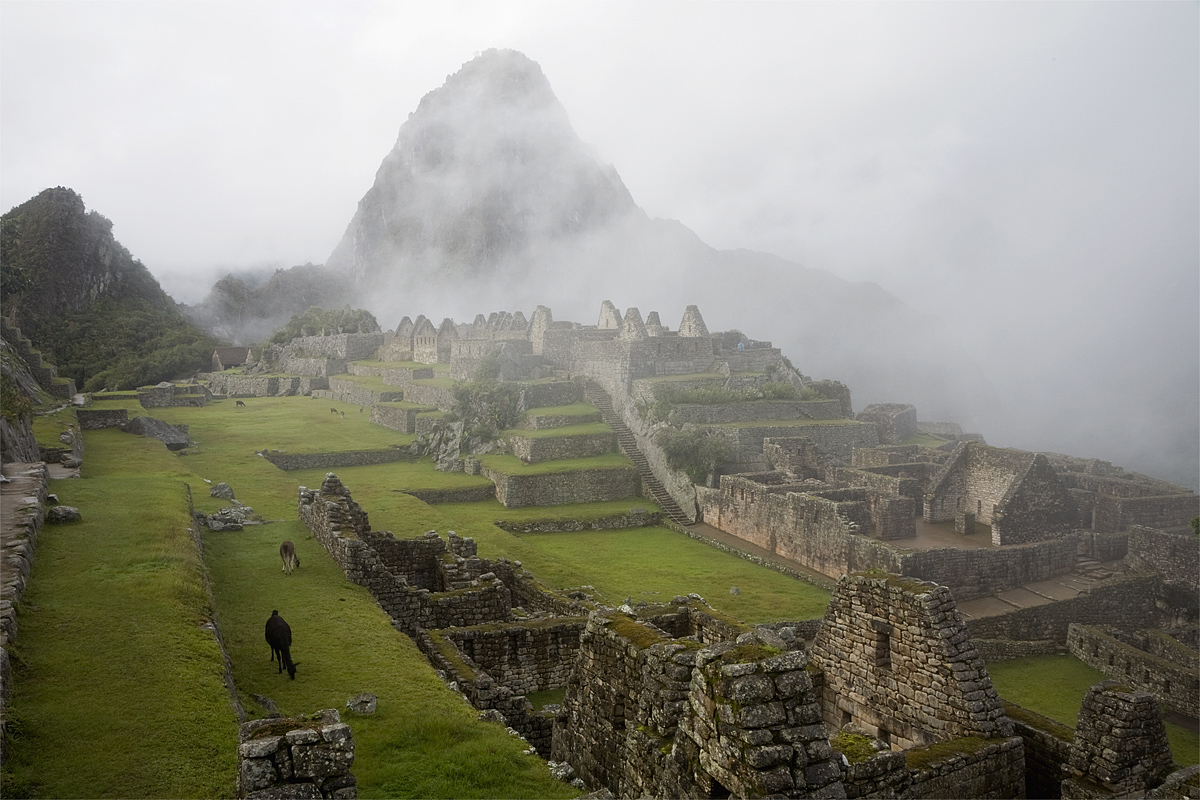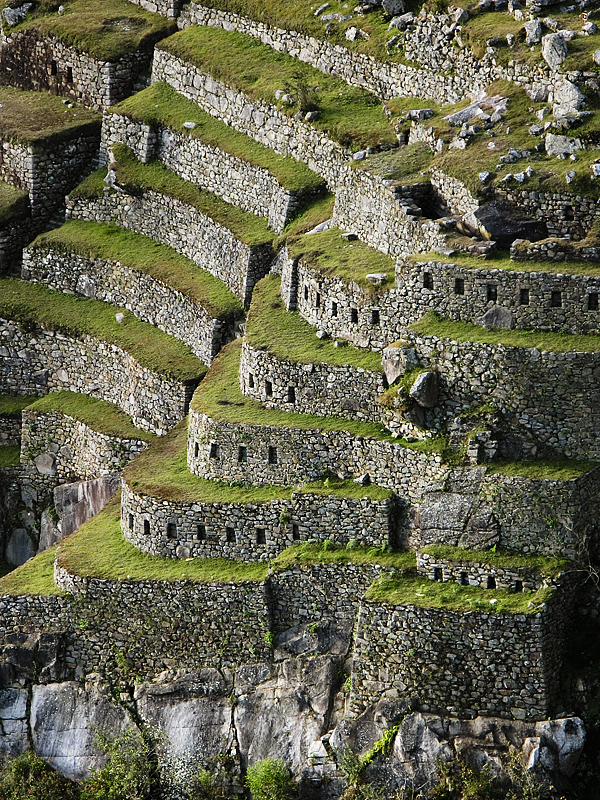
With two-thousands visitors per day - more at the June and December solstices, when both my trips took place - my desire to have MACHU PICCHU all to myself quickly became nothing but a dream. My only option really was to photograph as if I were the only person there - to have a singular experience of MACHU PICCHU through the viewfinder of my camera.
In creating these images, I established a few rules to guide my process:
Capture images without all the tourists
Never ask anyone to move out of the way
Focus on what Machu Picchu was revealing to me
It was in narrow passages of time and space that images without people unfolded. A split second, when someone stepped behind a wall or left the frame completely, was all that I needed.
At the time of the June Solstice, crowds gathered at the Intiwatana. While you can't see anyone in the image below, if you look closely you can see the shadow of a couple that had just walked behind the magnificent carved stone they call "Hitching Post to the Sun".
“I did not remove any people, signs or protective barriers through retouching these images. In some you can see the top of a person’s head or even a group of people
in the distance.”
“What Machu Picchu revealed to me...”
...and I tried to capture, was that the builders of this great civilization had peeled back the canopy of a majestic rainforest and framed the implicit harmony between nature and humans. These man-made terraces expose an underlying skeleton that signifies our interconnectedness. Among these stones lies the silent offering of inspiration.
The Architecture of Spirit
The Incas worshipped the sun, which they called Inti. I was fortunate to capture the first rays of sunlight at the Temple of the Sun during both solstices one year. At the June solstice, the temple's carved stone floor is perfectly aligned with the sun that reaches it through the east-facing window (see image below). It was the Inca's way of using architecture to celebrate the sun's return to them after its northern trajectory.
At the December Solstice, it wasn't until my third and final morning that clouds finally parted, allowing the sun's rays to shine through the temple's south-facing window. Unfortunately, a man was standing on a wall in an out-of-bounds area directly in the frame of my camera. I broke rule number two and yelled - pleaded actually - but he would not move (turns out he was a government official!). So I did the next logical thing - I joined him. He continued to stand on the wall but graciously backed away so that I could take the photograph you see below.
“The book is called Stone Offerings because...”
Machu Picchu is more than simply an archeological relic. While photographing there I began to see the perfect expression of the natural and man-made worlds deeply connected and in harmony with each other. If we are so powerfully filled with wonder and awe in the presence of this deep connection, then we ought to utilize this awareness to create our own extraordinary places that inspire us. Machu Picchu's unique offerings are both historic and timely to our human response to the built environment.
Mike Torrey is a professional architectural photographer based in Southern California. He has spent his whole career working with the built environment - prior to becoming a photographer, Mike worked as an energy efficiency consultant.
He has presented slide programs on Machu Picchu to sold out audiences at the Smithsonian Institution and Museum of Photographic Arts, as well as programs put on at the U.S. Library of Congress and other libraries and museums.
Mike is a member of the Board for the Friends of San Diego Architecture, which presents a lecture program on the built environment.















